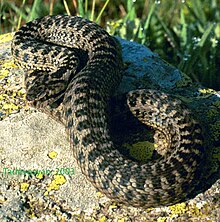
Macrovipera lebetinus, known as the blunt-nosed viper, Lebetine viper, Levant viper, and by other common names, is a viper species found in North Africa, much of the Middle East, and as far east as Kashmir. Like all other vipers, it is venomous. Five subspecies are currently recognized, including the nominate race described here.
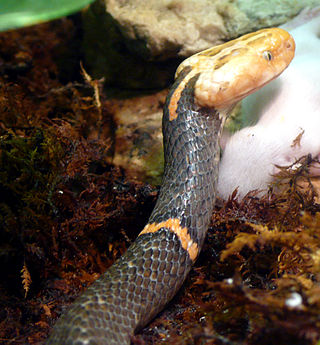
Azemiopinae is a monogeneric subfamily created for the genus Azemiops that contains the viper species A. feae and A. kharini. They are commonly known as Fea's vipers. No subspecies are recognized. The first specimen was collected by Italian explorer Leonardo Fea, and was described as a new genus and new species by Boulenger in 1888. Formerly considered to be one of the most primitive vipers, molecular studies have shown that it is the sister taxon to the pit vipers, Crotalinae. It is found in the mountains of Southeast Asia, in China, southeastern Tibet, and Vietnam. Like all other vipers, they are venomous.
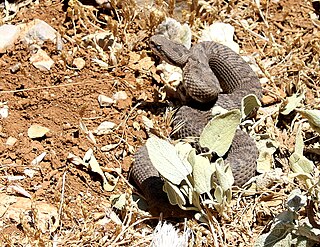
The Lebanon viper, also known as Bornmueller's viper, is a species of venomous snake in the subfamily Viperinae of the family Viperidae. The species is native to Western Asia. There are no recognized subspecies.
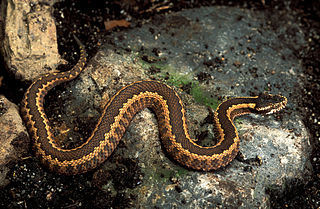
Vipera dinniki is a viper species native to the Caucasus Mountains region, part of Russia, Georgia, and Azerbaijan. Like all other vipers, it is venomous. No subspecies are currently recognized.

Vipera kaznakovi, known as the Caucasus viper, Kaznakow's viper, Kaznakov's viper, and by other common names, is a species of venomous snake in the subfamily Viperinae of the family Viperidae. The species is endemic to Turkey, Georgia, and Russia. No subspecies are currently recognized.

Vipera lotievi, commonly known as the Caucasian meadow viper, is a species of venomous snake in the family Viperidae. The species is endemic to Azerbaijan, Georgia, and Russia. There are no subspecies that are recognized as being valid.
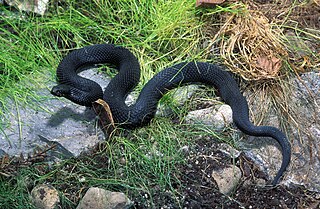
Vipera nikolskii is a venomous viper species found in Ukraine, eastern Romania, and southwestern Russia. No subspecies are currently recognized.

Montivipera raddei, also known as the Armenian viper and by many other common names, is a species of venomous snake in the subfamily Viperinae of the family Viperidae. The species is endemic to Armenia, Azerbaijan, Iran, Turkey, and possibly also Iraq. Two subspecies are currently recognized.

Vipera ursinii is a species of venomous snake in the subfamily Viperinae of the family Viperidae. It is a very rare species, which is in danger of extinction. This species is commonly called the meadow viper. It is found in France, Italy, and Greece as well as much of eastern Europe. Several subspecies are recognized. Beyond the highly threatened European population, poorly known populations exist as far to the east as Kazakhstan and northwestern China.

Vipera renardi is a species of viper, a venomous snake in the family Viperidae. The species is endemic to Asia and Eastern Europe. Five subspecies are recognized.

Wagner's viper, known as the ocellate mountain viper, ocellated mountain viper, and Wagner's viper, is a species of venomous snake in the subfamily Viperinae of the family Viperidae. The species is native to eastern Turkey and northwestern Iran. There are no subspecies that are recognized as being valid.
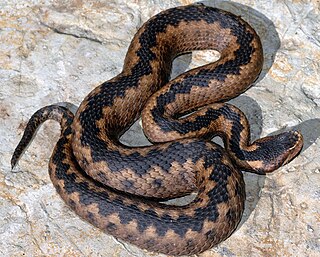
Vipera orlovi is a species of venomous snake in the family Viperidae. The species is endemic to Russia.

Ilya Sergeyevich Darevsky was a Soviet Russian zoologist-herpetologist and a corresponding member of the Russian Academy of Sciences. During his career he described 34 species of amphibians and reptiles. Darevskia, a genus of Caucasian rock lizards, is named after him.

Mount Leyli, also Leili is a 3,157 m (10,358 ft) Mountain lies on the border of Samtskhe–Javakheti, Kvemo Kartli (Georgia) and Shirak Province, Lori Province (Armenia). Leyli is the second highest peak of the Javakheti Range in the Lesser Caucasus Mountains.

The black-headed ground snake, also known as the Palestine kukri snake is a species of small and elegant harmless snake, which is endemic to the Eastern Mediterranean and the Near East. It belongs to the Colubridae family. Two subspecies, Rhynchocalamus melanocephalus melanocephalus and Rhynchocalamus melanocephalus satunini, are currently recognized.
Vipera eriwanensis, commonly known as the Alburzi viper or the Armenian steppe viper, is a species of venomous snake in the family Viperidae. The species is native to western Asia. There are two recognized subspecies.

Vipera altaica, the Altai viper, is a hybridized species of viper, a mix between Vipera berus and Vipera renardi. It has been sighted very few times and only on the borders between Russia, Mongolia and Kazakhstan, all near or on the Altai Mountains. Sighted Altai vipers have been small or medium sized. Its name is derived from the mountain range it has been found in.
Vipera sakoi, also known as Sako's viper, is a possible species of viper found in Turkey. These names are in honour of the son, friend and colleague of Tuniyev et al., Sako Tuniyev, who studied shield-headed snakes and passed away three years prior to the official description of the snake. The status of V. sakoi is uncertain as, while it is 4–5% genetically distinct from Vipera darevskii, their isolation from each other is uncertain. It is possible V. sakoi is a part of V. darevskii.
